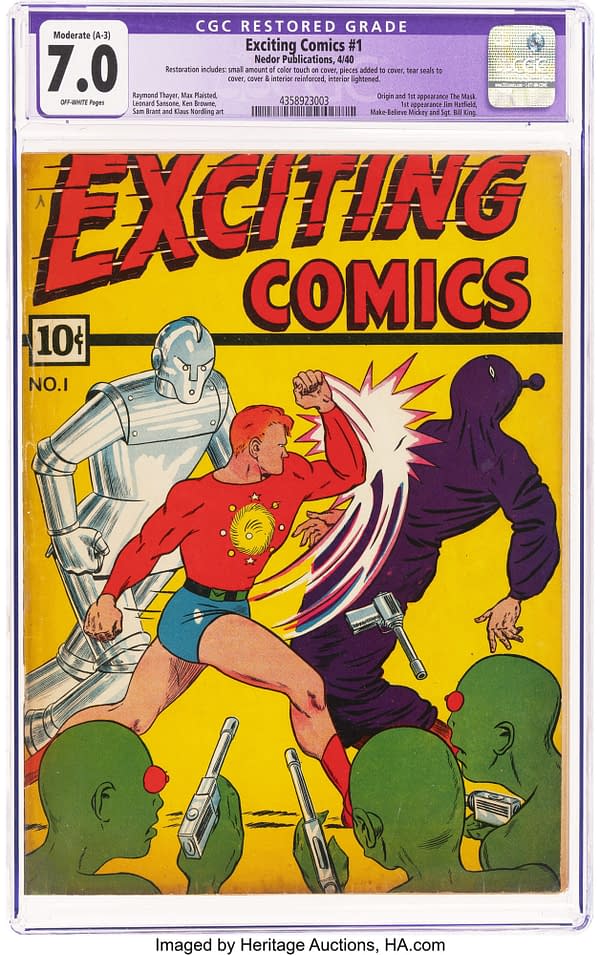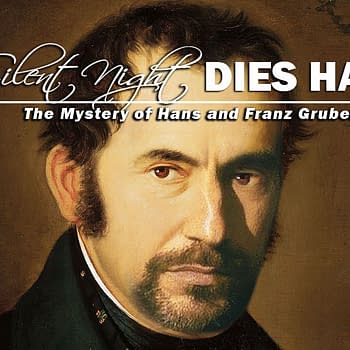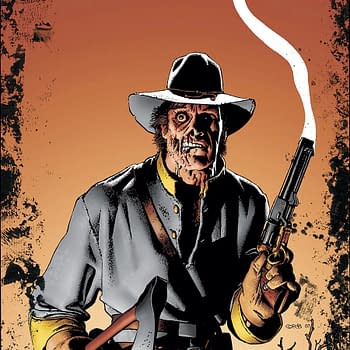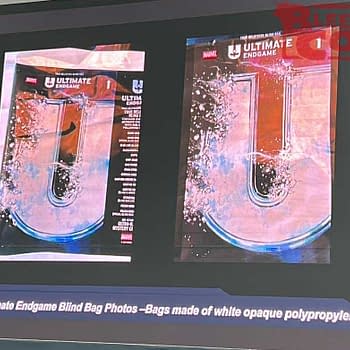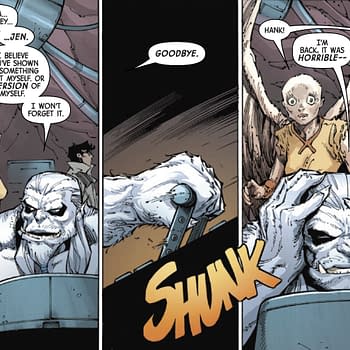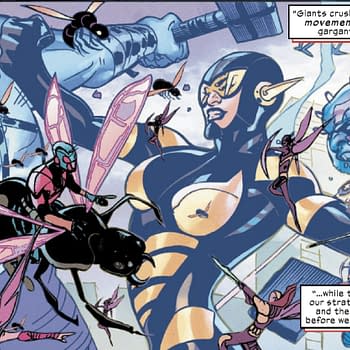Posted in: Comics, Heritage Sponsored, Vintage Paper | Tagged: Batman, black bat, golden age, Ned Pines, Standard/Better/Nedor
The Black Bat vs Batman Feud Hits Comics, Exciting Comics 1 at Auction
In late 1939, it appeared that pulp hero the Black Bat would be heading to comic books, and there's a glimpse of that in Exciting Comics #1.
Article Summary
- The Black Bat vs. Batman legal feud nearly erupted in 1939, with similarities in origin stories and character designs.
- Exciting Comics #1 featured the Black Bat as the Mask, an indication of likely legal brinksmanship between publishers.
- Bill Finger’s and others’ accounts suggest a tentative agreement allowed both heroes to co-exist in their respective domains.
- The Black Bat character underwent numerous design changes to avoid conflicts, continuing his life as the Mask in comics.
As a glimpse at the Ned Pines Standard/Better/Nedor line that could have been, Exciting Comics #1 is quite a bit more important than many collectors realize. The first issue of the third comic book series that Pines launched seemed to indicate that he would use this title to debut some of his pulp characters into comic books. It features an adaptation of the first Captain Future story from the pulp Captain Future v1 #1 with the lead character renamed Major Mars, an adaption of the first Jim Hatfield, Texas Ranger story from Texas Rangers v1 #1, and perhaps most interestingly, an adaption of Pines' first Black Bat story from Black Book Detective v9 #2 with the character renamed the Mask. But something happened to alter what might have been the original plan here, and that something was probably Batman. An underappreciated Golden Age comic book key, there's a CGC Apparent FN/VF 7.0 Moderate (A-3) Off-white pages copy of Exciting Comics #1 (Nedor Publications, 1940) and a few other issues of the series up for auction in the 2025 September 18 Golden Age Comics Century Showcase Auction II at Heritage Auctions.
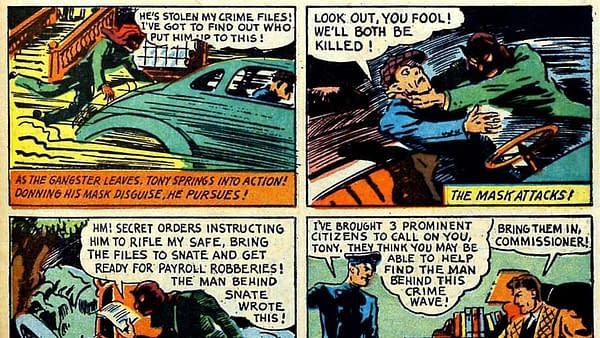
A character called The Black Bat first appeared in the pulp Black Bat Detective Mysteries in 1933-1934, by Murray Leinster from the publisher The Berryman Press. The July 1939 issue of the Standard Magazines (the Pines line typically represented itself as Standard Magazines or the Standard Group in trade publications during this time, and sometimes as the Thrilling Group to the reading public) pulp Black Book Detective introduced a new Black Bat in a story written by Norman A. Daniels. In Daniels' story, the character is a district attorney who gets a face full of acid during a court hearing, which disfigures and blinds him. This is widely considered a close influence on the origin of the Batman villain Two-Face in Detective Comics #66, cover-dated August 1942. This origin is chronicled for comics in Exciting Comics #1.
But the characters had more immediate similarities, and both publishers quickly realized it. Despite the fact that Detective Comics #27 (copyright date March 30, 1939) hit newsstands about a month before Black Book Detective volume 9 #2, (copyright date May 2, 1939), the Batman vs Black Bat matter was more complicated than it appeared. In an interview in The Pulp Collector #19, Daniels told historian Will Murray that he came up with this character in response to editor Leo Margulies' request for something like the Shadow, and that his records show he received payment for the story on December 6, 1938. The devil is in the details here, however, because Daniels' original story was based around a tiger motif, rather than a bat. It was Margulies who suggested that change and Daniels did not recall whether it was done by him or edited at the Standard offices, but he still concluded that "We were the first."
That said, the closeness of the copyright dates (which, generally speaking, function as release dates) suggests that Standard Magazines could not have been influenced by the Batman published in Detective Comics #27. According to Batman co-creator Bill Finger, as reported by Jim Steranko in The Steranko History of Comics, "There was a lawsuit almost pending. It was a weird coincidence. Apparently this character had already been written and on the drawing board. Whit Ellsworth used to be a pulp writer for Better Publications. So through Ellsworth's intervention a lawsuit was averted. They were ready to sue us and we were ready to sue them. It was just one of those wild coincidences." Steranko also noted that "the Black Bat wore gauntlets with fins, a costume device Batman wouldn't develop until Detective 36, about a year after his inception."
As for his part, Ellsworth had been an editor at the company that would become DC Comics since the early Malcolm Wheeler-Nicholson era around 1935-1937. He then freelanced for Margulies and fellow Standard Magazines editor (and future DC Comics editor) Mort Weisinger on a number of their titles 1938-1939 including at least one Black Bat story for Black Book Detective. Ellsworth was rehired as a DC Comics editor around January 1940, although most historians also believe he had an uncredited hand in editing the debut of the Spectre in More Fun Comics #52, which would have him easing back in the door at DC slightly earlier. This would all likely mean that handling the Black Bat v Batman issue was one of his first tasks upon returning — likely armed with the understanding that his former associates at Standard were preparing to launch comic book versions of their major heroes.
Taking Bill Finger's account of this matter at face value, the timeline suggests that the production of Exciting Comics #1 was a bit of legal brinksmanship on the part of Pines in his conflict with DC Comics. Both Pines and DC already had reputations for aggressively defending what they perceived as their turf. As we've seen in another recent post here, it's likely that Pines talked Fawcett Publications out of using Thrill Comics despite Fawcett having applied for a trademark on that title first, due to Pines' extensive use of "Thrilling" as a pulp brand. It's possible and perhaps likely that he was representing privately to DC Comics that he was preparing comic book versions of his pulp heroes, and felt that he had the right to do so.
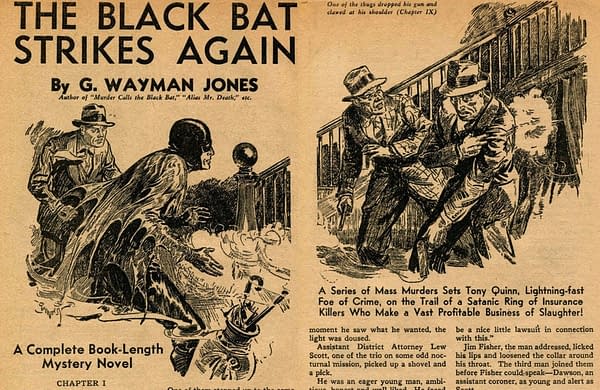
But ultimately, it appears that Pines and DC Comics reached an accord. Writing again on this matter in Alter Ego #98, Murray suggests that Ellsworth and Pines subsequently brokered an agreement that each character could continue on in their respective pulp and comic book titles unchallenged, staying in their lanes, so to speak. Subsequent history seems to bear this out, as the Black Bat would continue in pulps through 1953, and for comics, the Black Bat became the Mask, with a very different design for Exciting Comics. Ironically, he looks more like a superhero in the Black Book Detective version, and more like a pulp character in the Exciting Comics version. Further, it appears that "the Mask" was not Pines' second choice, either. The Black Bat left paper stickers of a bat stuck to his victims as a calling card, and the artwork of Exciting Comics #1 shows that this had been changed to an owl. While changing from Owl to the Mask is generally believed to be a move to avoid a conflict with Whitman Publishing Co over their own Batman-like character the Owl, it should be noted that Exciting Comics #1 beat Crackajack Funnies #25 to the newsstands by nearly five months.
None of this quite explains the Captain Future / Major Mars matter. Notably, Exciting Comics #1 would be Major Mars' only appearance, while the Mask lasted through Exciting Comics #20. But as we examine in some detail in another post, it would appear that one explanation is that Pines owned the name Captain Future via its creation by Standard Magazines editors Mort Weisinger and Leo Margulies during 1939's 1st World Science Fiction Convention while regular Captain Future pulp series writer Edmond Hamilton owned the character and story concepts he created. A different Captain Future would subsequently be launched in another brand extension of an existing pulp title, Startling Comics.
Norman A. Daniels (June 3, 1905 – July 19, 1995) was a pulp, radio, television, and comic book writer best known for his creation of the Black Book Detective version of the Black Bat. He entered the pulp field in 1932 with a contribution to Detective-Dragnet magazine. He also created Rang-a-Tang the Wonder Dog for MLJ Comics' Blue Ribbon Comics. Daniels was a writer for the Nick Carter, Master Detective radio show, and his work appeared on the Alfred Hitchcock Presents television show.
Pines' Standard/Thrilling Group would go on to launch a wide range of pulps using the Exciting brand, including Exciting Western, Exciting Detective, Exciting Love, and Exciting Sports. There are 32 entries for Exciting Comics #1 on the CGC census. An underappreciated moment in early Golden Age history, there's a CGC Apparent FN/VF 7.0 Moderate (A-3) Off-white pages copy of Exciting Comics #1 (Nedor Publications, 1940) and a few other issues of the series up for auction in the 2025 September 18 Golden Age Comics Century Showcase Auction II at Heritage Auctions.
